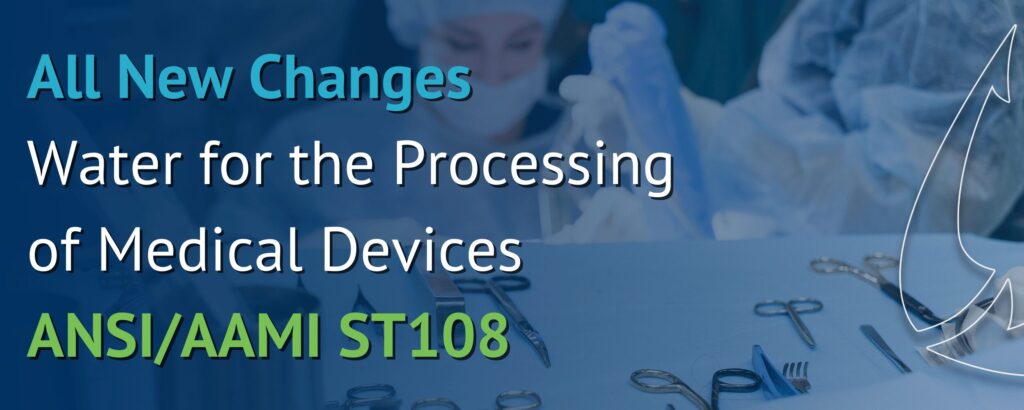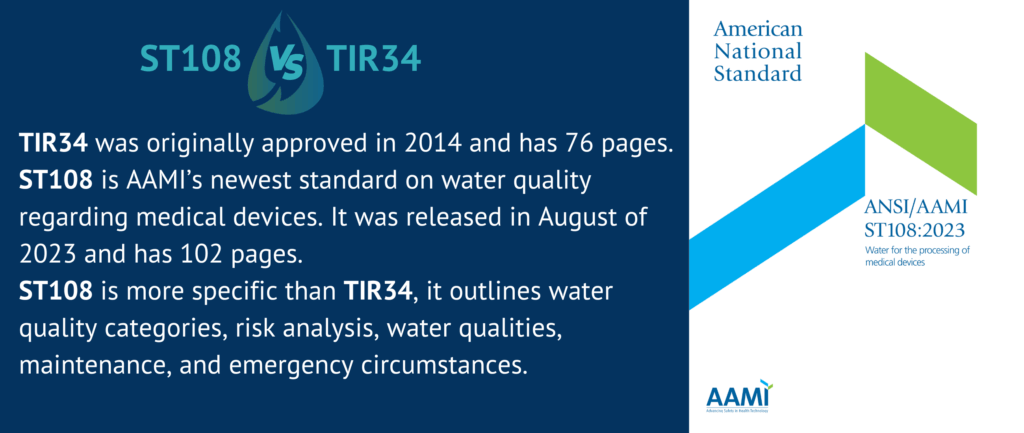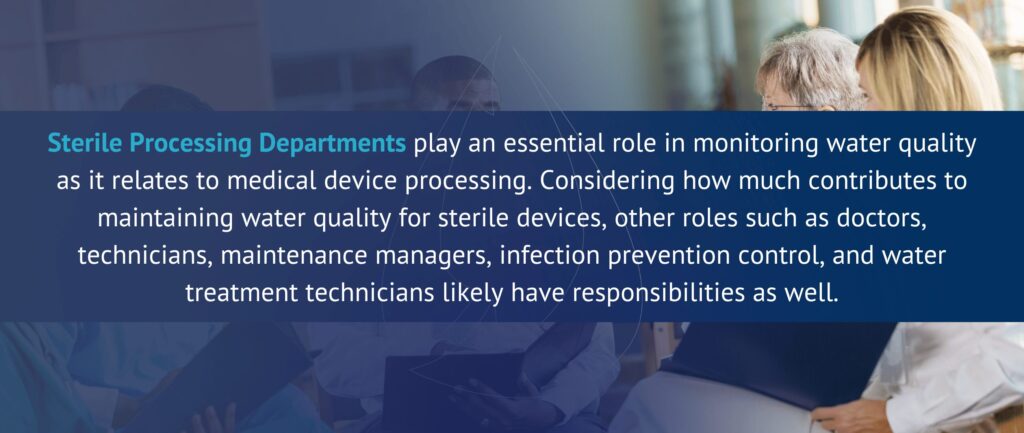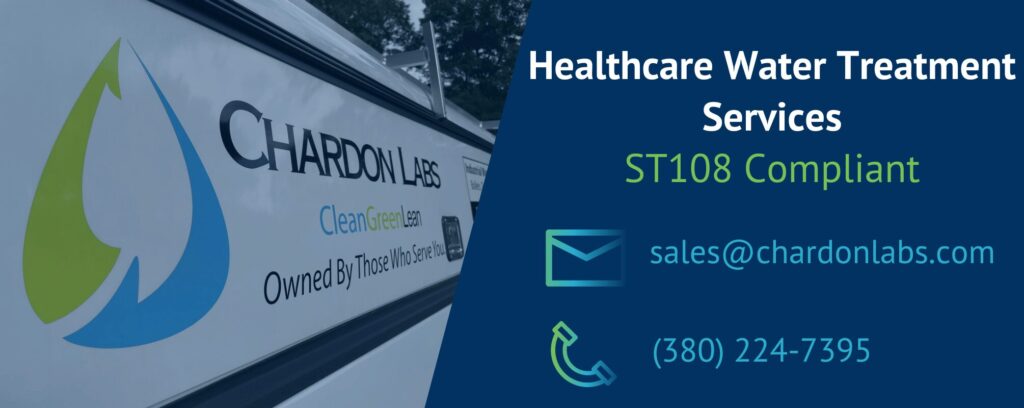
The AAMI ST108 is a newly released water quality regulatory standard describing water intended for processing (cleaning, rinsing, etc.) medical devices, commonly referred to as the central sterile process. The standard was put in place to ensure water that contacts medical instruments is properly sterilized, reducing the risk of spreading infections. Untreated water has undesirable properties and potentially dangerous levels of contamination. Water management or Legionella control plans need to include the AAMI ST108 procedure.

Utility water:
Standard potable water that comes from a normal faucet. This water should not be utilized for direct sterilization or patient use. Since it is in the facility and there is a risk of contamination it still needs to meet regulations. It could be utilized to wash or rinse medical devices but must not be the final rinse. 6.5-9.5 pH at 77°F. Alkalinity units <400 (mg CaCO3/L). Bacteria units <500 (CFU/mL). No endotoxin (EU/mL). Total organic carbon units < 1 (ppm mg/L).
Critical water:
This is expected water that comes into contact with patients. It could be the final rinse of medical devices or the water used for steam sterilization. Critical water has the strictest regulations as it poses the most risk to patients. 5-7.5 pH at 77°F. Alkalinity units <8 (mg CaCO3/L). Bacteria units <10 (CFU/mL). Endotoxin units <10 (EU/mL). No total organic carbon units < 1 (ppm mg/L).
Steam water:
(New category). It includes the water that is heated to produce steam. It could be through a steam generator or boiler. This steam water sterilizes medical devices. (Test condensate.) 5-9.2 pH at 77°F. Alkalinity units <8 (mg CaCO3/L). No bacteria (CFU/mL). No endotoxin (EU/mL). No total organic carbon units < 1 (ppm mg/L).
Non-Critical: (Stethoscopes, drape sheets, etc.)
Semi-Critical: (Aspirator tubes, respiratory therapy devices, etc.)
Critical: (Forceps, surgical devices, catheters, etc.)

This new standard is specifically directed at healthcare facilities. This could include hospitals, urgent care, clinics, surgical rooms, dialysis centers, rehabilitation centers, birth centers, therapy centers, diagnostic imaging centers, ambulatory rooms, and more. A sterile processing department is usually present. Some of the important roles who are responsible for enacting best practices, and enforcing the AAMI ST108 sterile processing of water standards are:
Doctors, Nurses, Technicians:
Anyone involved in the actual processing of medical instruments needs to adhere to the water quality standards. They would be the last person in the process and are the ones who directly interact with the patients affected.
Facility Maintenance Managers:
The head of the healthcare facility’s maintenance and quality control. They need to oversee essential health and safety standards. They should focus on hiring the right people to enforce these standards and providing the necessary equipment and support.
Infection Prevention Control:
They oversee the correct procedures for disease prevention for healthcare facilities and workers. Their role is solely to protect vulnerable patients from being exposed to contaminants.
Chemical Water Treatment Service Technicians:
They perform regular maintenance of water systems, monitoring the water chemistry, chemical usage, contamination, and water usage. In addition to this, create a water management plan for all potable water systems such as faucets, showers, and water fountains.
Check your current water purification equipment to make sure it is up to par with the new AAMI ST108 standards. Your water purification equipment may use steam or reverse osmosis to clean the water. To size water purification equipment properly consider that washers, disinfectors, and ultrasonic sinks have at least an hour’s worth of water during normal system use. Factor in the quantity of each. Additionally, a properly sized pure water storage tank can handle the extra water output. Refer to manufacturer guidelines in conjunction with this.

Chardon Labs has worked with several healthcare facilities. We can assist in creating an AAMI ST108-compliant water management plan and test/treat for Legionella. Additionally, we offer chemical water treatment services for cooling towers, boilers, loops, and heating/cooling equipment. To reach us, fill out a form or call at (380) 224-7395. We offer free on-site surveys to assess your specific situation.